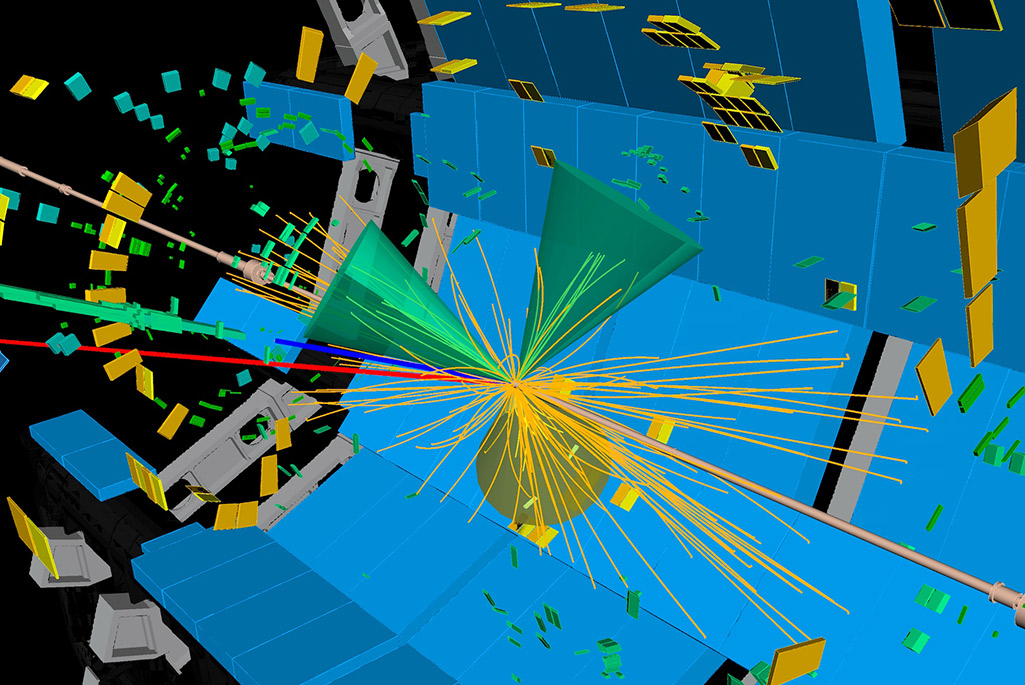Haichen Wang, a faculty scientist in Berkeley Lab’s Physics Division and an assistant professor of physics at UC Berkeley, along with colleagues from the ATLAS Collaboration have recently published the first observations of simultaneous four-top-quark production during proton-proton collisions at the LHC (the Large Hadron Collider at CERN).
The Berkeley team led the development of graph neural network applications for this project, and to make these groundbreaking observations, they introduced the graph neural network event classifier, which significantly enhanced the ATLAS Experiment’s sensitivity to this rare process by capturing relational information between particles. According to Wang, this extremely rare process is “arguably one of the most complex final states currently being observed at the LHC.”
To make this observation, the team used the ATLAS detector to record the products of collisions of bunches of protons against protons produced by the LHC, with a frequency of about 40 MHz (40 millions times per second). Each of these bunch “crossings” yielded an average of between 20 to 60 proton-proton collisions (depending on the specific setup). The team gathered data for a few millions of billions of proton-proton collision events, taken over a period of 4 years (2015-2018), during which it was expected only about a thousand possible four-top-quark events would be produced. The team’s graph neural network was crucial for identifying these rare events, enabling them to distinguish the four-top-quark from among so many other difficult processes that yield similar sets of particles.
As the heaviest elementary particle in the Standard Model, the top quark could provide insight into the origin of mass and the Higgs boson, and the study of four-top-quark production is especially exciting as researchers explore other particles and forces that could alter the probability of producing four top quarks from Standard Model predictions.
Important contributions to this project were also made by several students and postdocs. Berkeley Lab postdoc Shuo Han edited the final manuscript with support from Wang’s LDRD entitled Exploring the Unknown Using the Higgs Boson with the ATLAS Experiment at the LHC. UC Berkeley graduate student, Ryan Roberts, is the editor of ATLAS’ internal documentation for this project. UC Berkeley undergraduate student, Tsai Chen Lee, was also awarded exceptional authorship by ATLAS for this publication for her contributions.
Read More:
Observation of four-top-quark production in the multilepton final state with the ATLAS detector
June 12, 2023 | Aad, G., et al. | The European Physical Journal C
ATLAS observes the simultaneous production of four top quarks
March 24, 2023 | ATLAS Collaboration | ATLAS Experiment Physics Brief
